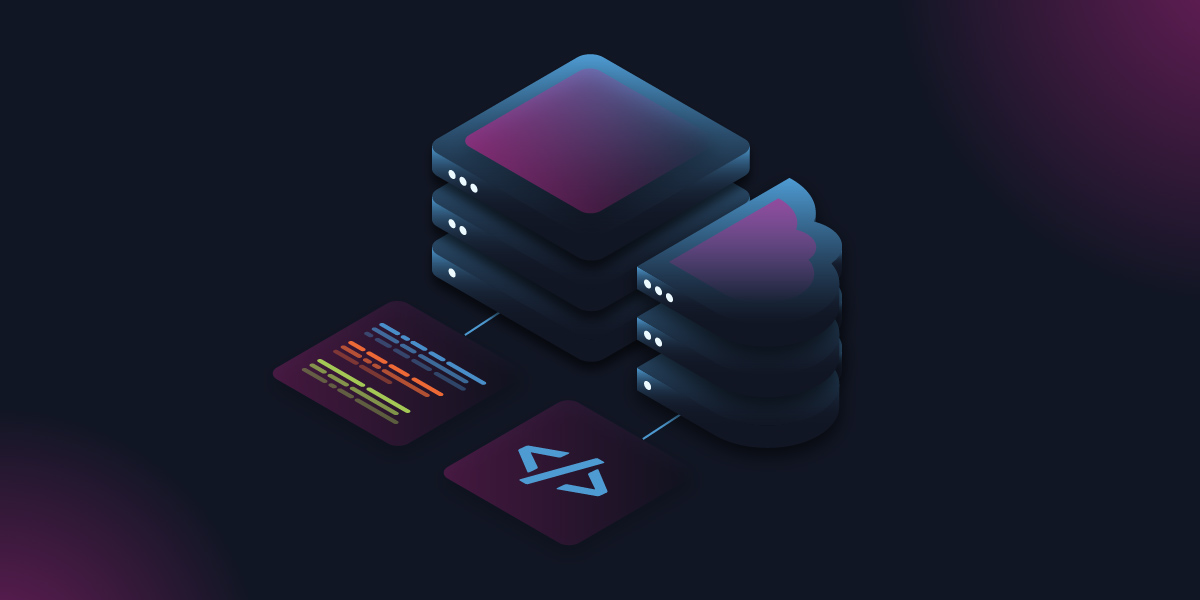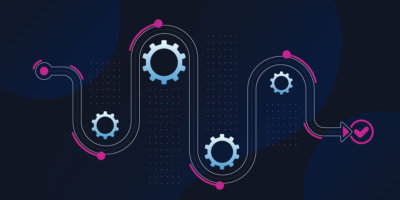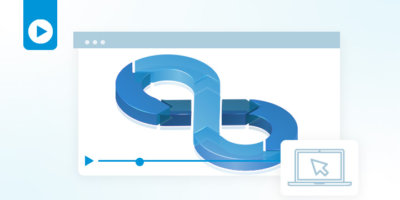In a Futuriom report, The Future of Hybrid Cloud Automation, the cloud and networking analyst firm breaks down the current state of public cloud, private cloud, and on-premises infrastructure in enterprise. The report identifies important trends driving change in the space and important tools and approaches for adopting automation in these hybrid, distributed cloud environments.
One of the key conclusions outlined in the report is the importance of an infrastructure as code (IaC) mindset to scale networking capabilities for hybrid and multi-cloud environments. As Futuriom states, IaC has become a significant trend in other areas of IT, and recently it’s gaining ground in networking. Why? Simple – network IaC allows networking infrastructure to be deployed faster and with fewer errors and incompatibilities, which enables your network team to scale their capabilities with the expanding networking ecosystem.
The methods and strategies for treating infrastructure as code are vital for NetOps as we move into a world where both the network and cloud are rapidly increasing in complexity and scale and where the boundaries between the two become increasingly blurred. If network teams are to manage changes in a fast, consistent way, IaC methods including integration with pipelines, API-driven systems, and data transformation are necessary for success.
Why Does IaC Matter for Multi-Cloud & Hybrid Cloud Networking?
Approaching infrastructure as code is a movement that’s growing rapidly because of some key advantages – speed, consistency, and the ability to be flexible with evolving infrastructure. In cloud networking, tools like Terraform and Python scripts enable teams to scale, provisioning new services and new cloud resources on-demand with automation. To manage an infrastructure that’s distributed across multiple cloud environments, dependent on a variety of third-party vendor tools and systems, network teams need to adopt new approaches. DevOps concepts like pipelines, CI/CD, common standards, and automation are tried and tested for success in software development – treating network infrastructure as code involves adopting these proven tools and practices.
Networking is headed in this direction and with prevalence of hybrid and multi-cloud environments, teams will need to leverage APIs, networking standards, and software automation to tie network domains together. Everything from on-premises data centers to SD-WAN branches must be managed in a central, iterative, and consistent way. Working across different cloud environments only further complicates the infrastructure, and future-fit teams are already moving to a NetDevOps approach to handle the changing demand.
How to Leverage IaC for Hybrid & Multi-Cloud Environments
There are a lot of processes, methods, and toolsets that fall under an ‘IaC’ bucket. Below is a list of some common approaches and important capabilities to consider when looking to adopt Infrastructure as Code for hybrid and multi-cloud networking:
- Pre-Built Network Integrations: Pre-Builts that can be standardized on your network management platform enable customers to avoid spending time building and maintaining custom integrations with between network systems.
- Federation of Network Configuration Data and Standards: Native support for standards-based network modeling languages, traditional CLIs, and APIs to store network configuration data across different network solutions and multiple cloud providers.
- Centralized Configuration Management: Defined Golden Configuration standards for both traditional and cloud networks can help ensure compliance and provide automated remediation capabilities, increasing accuracy and ensuring errors are corrected rapidly.
- Integration with Any CLI (Command-Line Interface) or NOS (Network Operating System): To effectively manage infrastructure in a hybrid or multi-cloud environment, you’ll want your management platform to integrate with any CLI and network OS(NOS) including third-party NOSs, cloud controllers, network orchestrators, DevOps and NetOps tooling, ITSM systems, messaging systems, telemetry, analytics tools, and more. It seems like a lot, but it’s not only possible – it’s necessary to keep up with the evolving network.
- Integration with Third-Party Monitoring and Pipeline Systems: This kind of integration is like another layer on top of your network systems. Integration with monitoring and pipelines provides NetOps teams with the ability to define event-driven automation, employing a closed-loop approach that automates trigger events such as a detected anomaly, determines a resolution, and implements the required changes with no manual steps necessary.
- Single, Aggregated, API-Driven Network Management View: Without a holistic management platform, the network team will be left swivel-chairing between every disparate network system to execute changes and will have an almost impossible task when it comes to maintaining configuration consistency. Integrating with other systems’ APIs and providing northbound API exposure allows a management platform to provide the network team with a single, logical view from which to manage a hybrid or distributed ecosystem.
How Does Itential Enable Network IaC?
Itential’s network automation and orchestration solutions are uniquely focused on our patented integration capabilities. We are a leader in the use of APIs and our library of Pre-Built Integrations, connecting both hybrid and traditional networking infrastructure and providing a unified platform from which network teams can manage their complex networks. The Itential Automation Platform integrates southbound with your network domains and any existing automation assets, allowing automation workflows to be built across all domains, including cloud, without manual input.
Most organizations today have a mixture of traditional networking equipment and virtualized infrastructure and have no plans to migrate away from one to the other – change management across this distributed hybrid environment can present challenges most automation solutions aren’t built to tackle. Innovative network teams are working to adopt the best of DevOps for managing their hybrid environments, deploying pipelines to streamline network configuration lifecycle activities, using repositories like Git for versioning and config code branches, and employing CI/CD methods to reduce risk and speed the network change process. These teams are looking for automation solutions that can bring them to the next level.
Itential provides capabilities that support all these activities, making adoption of IaC not only possible but simple. To learn more about how we support Infrastructure as Code for network automation, click here.
You can also read the full Futuriom report on “The Future of Hybrid Cloud Automation” here to see what other trends are important to keep an eye on.





